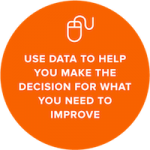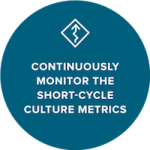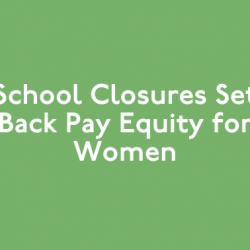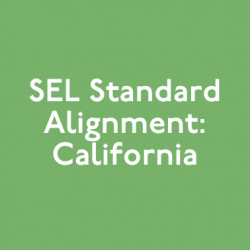By Jolynn Greene on May 24, 2017
There’s no question that the climate and culture arena is gaining traction in its importance as it relates to overall school and individual student success. According to the new national research report of K-12 educators The State of Climate & Culture Initiatives in America’s Schools, 70% of school administrators use their data from existing climate and culture initiatives to plan for school improvement. That’s a step!
Unfortunately, the report also suggests that most school leaders struggle with acting on their plans to actually achieve systemic change and results.
Let’s take a road trip together and discover how the journey can help you not only build an effective campus improvement plan but support you as you lead actionable change that gets results.
Research a destination
Just like a vacation, moving your school forward is a huge investment of human and fiscal resources, as well as time. Before heading out on a trip you might use Google, Trip Advisor, or other online tools to figure out the best place to go. With school improvement planning, you use data to help you make the decision about what you need to improve.
Take some time to study your school’s longer-term climate and culture outcomes, such as:

-
End of Year (EOY) Discipline Referrals
-
Suspensions
-
Attendance rates
-
Number of behaviors tracked per student per week
-
Number of incidents of specific behaviors
-
Number of specific consequences
-
Behavior data comparisons between groups
Select your destination

From your data review, you will likely have one or two areas that really grab your attention and make you say “Gosh we need to go there!”. Use that information to choose a destination; in other words, to create a goal. Develop a SMART (Strategic, Measurable, Attainable, Results-Oriented, and Time-Bound) goal that will take you where you’ve decided to go.
Here’s an easy formula for writing a goal:

Example School Improvement Plan Goals:
-
By May of 2017, In-School Suspensions at Central Middle School will be reduced by 50% compared to last school year.
-
By June 2017, the staff at Village Elementary will increase academic learning time by reducing the number of office discipline referrals from 360 to less than 30.
-
The students at Uptown Intermediate will increase their Average Daily Attendance from 85% in SY 2015-2016 to 93% in SY 2016-2017.
Map out your route, pack, and fuel up
So now you know exactly where you’re going. Great! But how are you going to get there? You must now decide what action steps you need to take on your improvement journey and the resources (funds, people, time) you’ll need to get you there.
A few guiding questions to help you get ready to implement your plan:

-
What initiatives or school-wide systems do you need to create, revise, or toss out?
-
Do you need to plan a school-wide positive incentive program?
-
Do you need a new consequence system?
-
Do you need to modify any behaviors?
-
Is there an opportunity to change how you analyze and plan with culture data?
-
How will you gain teacher buy-in?
-
How will you get students invested?
-
-
What people do you need and what roles will they play so that the action steps are scalable?
-
What time do you need to allocate in your schedule for the plans to work effectively?
-
What funding is necessary and how will you secure and allocate it?
Hit the road!

The school year begins with eager adults and smiling children back in the building and you begin the work of your action plans. Of course you make time for any necessary professional learning, collaborate with stakeholders in the plans, and set expectations. Everyone is excited about the journey; A “we can DO this” attitude is palpable throughout the school.
Monitor your course
Can you get to your destination by simply pointing the car in the right direction and hoping to get there? Absolutely not! You need to constantly be on the lookout for anything that might jeopardize your progress. Are you making good time? Are there dangers on the road you need to avoid? Are you monitoring your GPS to make sure the route you mapped out is working? Sadly, this is the critical step where many school leaders, who start out with the best of intentions, simply stop driving and let the plan try to drive itself.

School leaders must continuously monitor the short-cycle culture metrics to ensure the action plan is keeping you on course for reaching the desired goal, your destination. The metrics will also guide you in holding people accountable for the expectations you’ve set and keep you from veering off course with your other resources as well.
Here are some ways to monitor your progress toward improving school culture throughout the school year:
Make data a way of life for leadership: If leaders value data, it will trickle down to every layer of your organization. Make the data point that your goal is related to a standing agenda item for every leadership team meeting. Analyze it together weekly and use that knowledge to make decisions and prioritize actions.
Regularly Report Out Data: Make a habit of reporting progress measures related to your goal in weekly staff memos or school newsletters. This habit will not only keep stakeholders informed of your progress but it will ensure you stay in the habit of being watchful.
Culture Data Cycles: Put regular culture data meetings with teams of teachers into your school calendar (because it won’t happen otherwise). During those meetings check both school-wide data as well as contributions to that piece of data by department, grade level, or teacher. Plan changes necessary to keep data on track and loop back to data during the next meeting to see the effect.
Remember to prioritize this part of the trip. Don’t let “driver fatigue” (i.e. the busy-ness of the school year) prevent you from achieving your goals. Monitoring your course throughout your journey is the ONLY way you will ever arrive at your planned destination.
Arrive!

After the designated amount of time has passed, you finally arrive! Did you get to your intended destination? If so, take time to celebrate the success. Share the final data that shows your school’s achievements. Enjoy the fact that together, with the right plan, the right tracking, and a lot of hard work, you got where you intended to go. Live it up a little!
The journey to school improvement is indeed a continuous one, so you’re never truly at the end of the road. Now it’s time to pick your next destination, plan it, and take off on your next trip!

This blog post was contributed by Kickboard.
Sign up for Move This World’s newsletter to stay up to date on social emotional learning.
Enter your email below!










